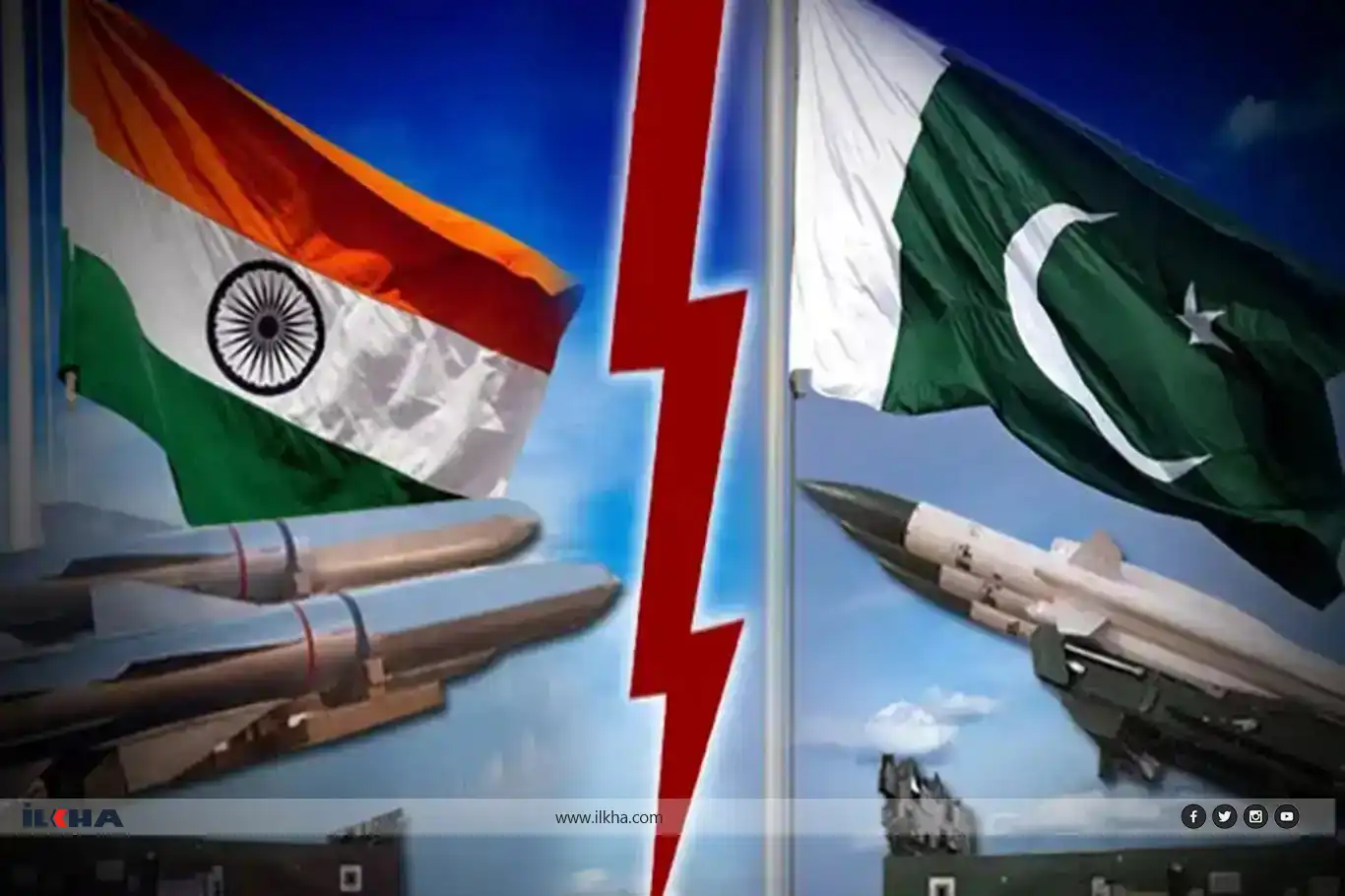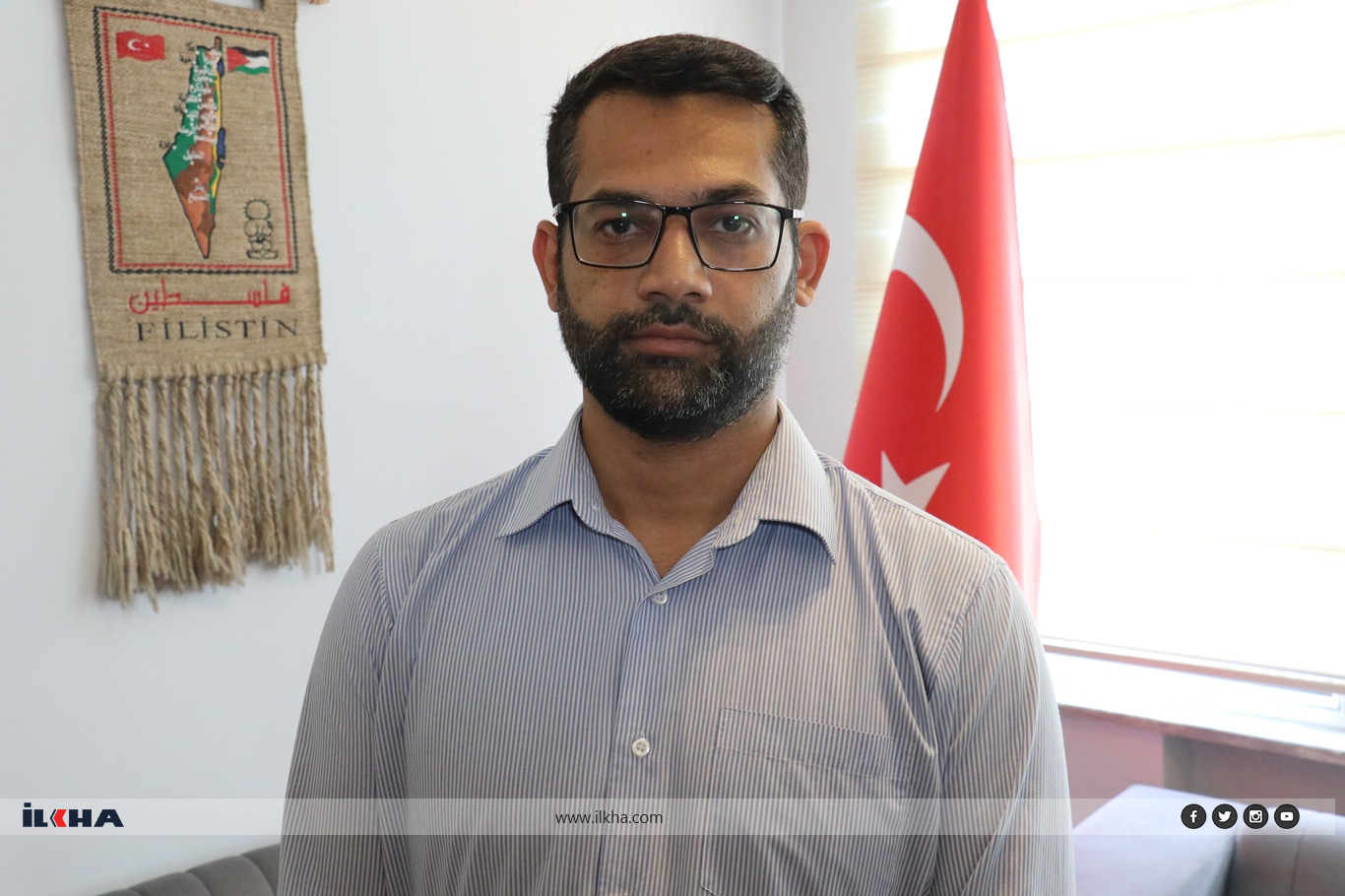India-Pakistan tensions soar: Deadly missile strikes spark fears of nuclear escalation


The volatile relationship between nuclear-armed neighbors India and Pakistan has reached a critical juncture following a series of deadly missile and drone attacks, with over 31 fatalities reported in recent clashes.
Abdullah Zubair Mir, a Pakistani PhD student specializing in international relations at a university in Türkiye, provided an in-depth analysis of the escalating conflict in an exclusive interview with ILKHA, warning of the potential for further violence and the involvement of foreign powers behind the scenes.
Origins of the Latest Conflict
The current flare-up traces back to April 22, 2025, when a devastating attack in Indian-administered Kashmir claimed 26 lives. Indian authorities swiftly pointed the finger at Pakistan, accusing it of sponsoring the attack. “India said, ‘Pakistan is behind this, and we must teach them a lesson,’” Mir explained, noting that such accusations have historically fueled cross-border hostilities. The situation deteriorated rapidly, with daily skirmishes erupting along the Line of Control (LoC), the de facto border separating Indian- and Pakistani-administered Kashmir.
Tensions peaked two days ago when India launched a barrage of 24 missiles targeting six different locations inside Pakistan, resulting in the deaths of more than 31 people, whom Mir referred to as “martyrs.” The strikes were followed by a significant incursion last night, when 12 unmanned aerial vehicles (UAVs) breached Pakistani airspace and conducted targeted attacks on unspecified sites. According to Mir, these drones were of Israeli origin, raising questions about the role of foreign technology and influence in the conflict.
A Recurring Cycle of Violence
Mir contextualized the current crisis within the broader history of India-Pakistan relations, which have been marred by conflict since the partition of British India in 1947. The disputed region of Kashmir remains the epicenter of their rivalry, with both nations claiming the territory in full but administering separate portions. “Such tensions between Pakistan and India occur roughly every five years,” Mir observed, citing previous escalations in 2016 and 2019 as examples.
In 2016, India claimed to have conducted a “surgical strike” inside Pakistan in response to an attack it attributed to Pakistani militants, though Pakistan denied any such operation took place. In 2019, India again accused Pakistan of supporting an attack in Kashmir, leading to airstrikes and a subsequent air battle in which Pakistan shot down two Indian fighter jets and captured a pilot, who was later released. Mir suggested that these recurring clashes are often exploited by India for domestic political purposes, particularly during election cycles or periods of waning public support for the ruling government.
 Abdullah Zubair Mir
Abdullah Zubair Mir
Domestic Politics and Foreign Influence
Mir pointed to Indian Prime Minister Narendra Modi’s leadership as a key factor in the current escalation. Since assuming power in 2014, Modi’s government has adopted a hardline stance toward Pakistan, often leveraging anti-Pakistan rhetoric to bolster nationalist sentiment. However, with Modi’s popularity reportedly declining, Mir argued that the recent attacks may be an attempt to project strength and rally domestic support. “India uses developments in Pakistan for its own internal politics,” he said, adding that such actions are designed to “show their power and demonstrate that they are against Pakistan.”
Beyond domestic motivations, Mir raised concerns about the involvement of foreign powers in the conflict. He noted that the drones used in the recent attacks were identified as Israeli-manufactured, and he claimed that Israeli and American military advisors are present in Indian-administered Kashmir. While stopping short of accusing these countries of directly orchestrating the attacks, Mir suggested that their technological and strategic support could be influencing India’s military actions. “We cannot say that a country is clearly behind what is happening, but the presence of Israeli and American advisors is notable,” he said.
Mir also speculated about the broader geopolitical context, particularly the United States’ strategic interests in the region. “America is behind India, using it to create a balance against China,” he said, referencing the growing U.S.-India partnership as part of efforts to counter China’s influence in Asia. Meanwhile, Pakistan maintains close ties with China, particularly through the China-Pakistan Economic Corridor (CPEC), a cornerstone of Beijing’s Belt and Road Initiative. This geopolitical rivalry adds a layer of complexity to the India-Pakistan conflict, with global powers potentially shaping the dynamics behind the scenes.
Risk of Escalation and Nuclear Concerns
Mir emphasized that Pakistan is unlikely to remain passive in the face of India’s recent aggression. “If Pakistan does not respond, India may strike again in the future,” he warned, citing the need to deter further attacks. However, he expressed cautious optimism that the conflict would not spiral into a full-scale war, given the catastrophic consequences of such an outcome. Both India and Pakistan possess nuclear arsenals, and any major escalation could lead to a nuclear confrontation with devastating regional and global implications. “A major escalation could lead to nuclear war,” Mir cautioned, underscoring the high stakes of the current crisis.
To prevent such a scenario, Mir predicted that regional and global powers would step in to mediate. Countries like China, Saudi Arabia, Qatar, Türkiye, and the United States have a vested interest in maintaining stability in South Asia, and diplomatic efforts are already underway, according to a recent statement from Pakistan’s Ministry of Defense. “These countries will probably intervene and try to resolve the situation,” Mir said, pointing to Pakistan’s ongoing diplomatic engagements as evidence of efforts to de-escalate.
Historical Context and Future Outlook
The India-Pakistan rivalry over Kashmir has deep historical roots, dating back to the partition that created the two nations. The region has been the site of three major wars (1947, 1965, and 1999) and countless smaller conflicts, with both sides accusing the other of supporting militancy and destabilizing activities. The LoC remains one of the most militarized borders in the world, and ceasefire violations are common, though the scale of the recent attacks marks a significant escalation.
Mir’s analysis suggests that while Pakistan’s response is likely, it will be calculated to avoid triggering a broader conflict. He noted that Pakistan has historically adopted a defensive posture but has also demonstrated its willingness to retaliate when provoked, as seen in the 2019 air skirmish. The involvement of regional and international actors, combined with the mutual recognition of nuclear risks, may help contain the crisis in the short term. However, the underlying issues—Kashmir’s disputed status, mutual distrust, and geopolitical rivalries—remain unresolved, ensuring that the potential for future conflicts persists.
Global Implications
The escalation between India and Pakistan has far-reaching implications for regional and global stability. South Asia is home to over 1.9 billion people, and a major conflict could disrupt trade, energy supplies, and security dynamics across Asia and beyond. The involvement of foreign technology, such as Israeli drones, and the potential influence of powers like the United States and China underscore the interconnected nature of the conflict. As the international community watches closely, the coming days will be critical in determining whether diplomacy can prevail over the specter of further violence.
For now, the people of Pakistan and India, particularly those in the border regions, brace for uncertainty as their governments navigate this dangerous moment. Mir’s sobering assessment serves as a reminder of the fragility of peace in South Asia and the urgent need for dialogue to prevent a descent into chaos. (ILKHA)
LEGAL WARNING: All rights of the published news, photos and videos are reserved by İlke Haber Ajansı Basın Yayın San. Trade A.Ş. Under no circumstances can all or part of the news, photos and videos be used without a written contract or subscription.
In an exclusive interview with ILKHA, Sadiq al-Ruzayki, President of the Sudanese Journalists’ Union, revealed shocking details about the ongoing atrocities in Sudan, stating that more than 4,000 civilians were killed and over 5,000 were detained within just two days in the besieged city of El-Fashir, the capital of North Darfur.
It has been two years since the Al-Qassam Brigades launched “Al-Aqsa Flood” against the Israeli occupation, a decisive operation that drew international attention back to the Palestinian cause and challenged decades of global neglect.
Two years have passed since Operation Al-Aqsa Flood erupted on October 7, 2023, shaking the foundations of the Israeli occupation regime and reshaping the geopolitical balance of the Middle East.
As Israel’s relentless genocide in Gaza continues to claim the lives of thousands of Palestinian civilians, strong reactions are rising in Türkiye against attempts to host concerts by Zionist-linked artists.